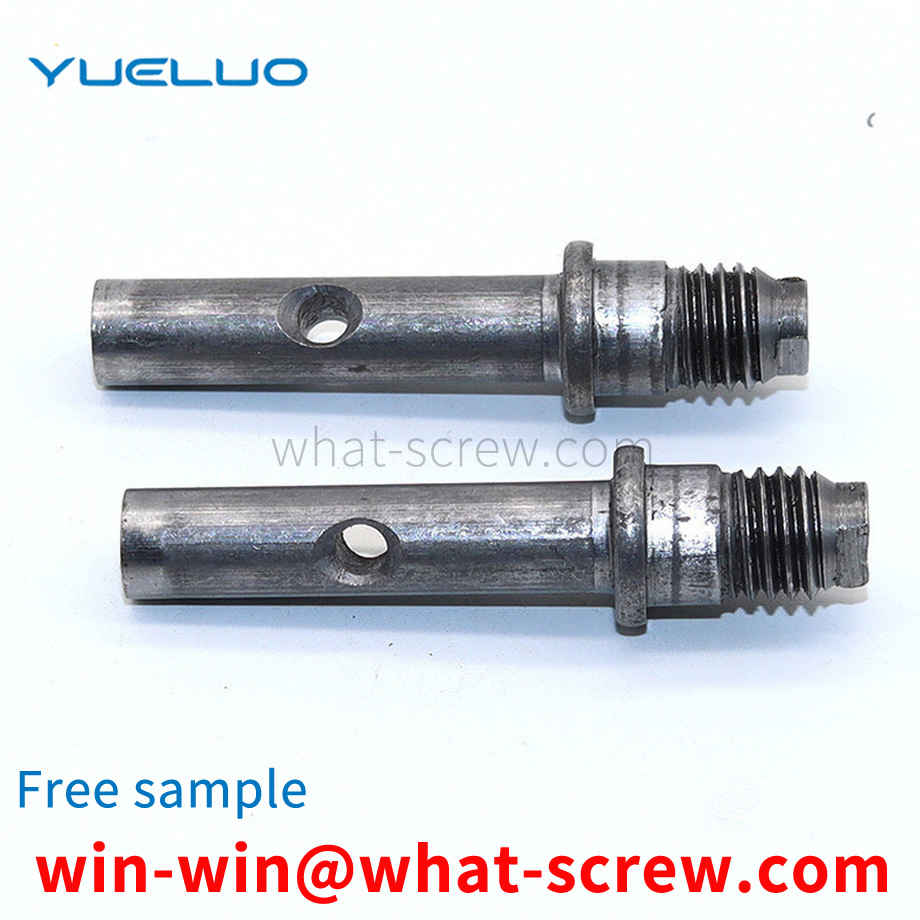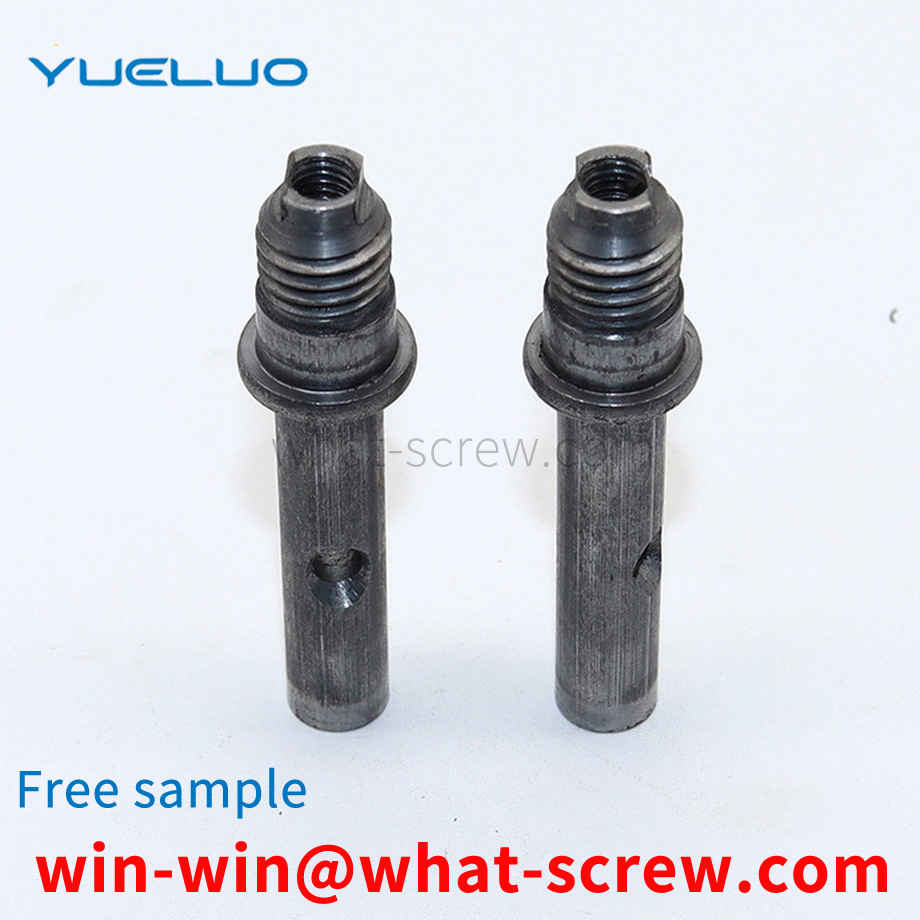The earless retaining ring for the hole is mostly installed in the annular groove on the inner wall of the pipe fitting. The outer diameter of this kind of retaining ring is slightly larger than the diameter of the assembly round hole. When assembling, the earless retaining ring needs to be pressed into the pipe fitting. Since the inner wall of the pipe fitting is relatively smooth, the earless retaining ring is easily skewed in the pipe fitting. It needs to be adjusted several times before entering the annular groove, and the assembly efficiency is low.
In the prior art, the earliest rivets were small pegs made of wood or bone, and the earliest metal deformations were probably the ancestors of the rivets we know today. Without a doubt, they are the oldest known method of metal joining, dating back as far as the earliest use of malleable metals, for example: the Bronze Age Egyptians used rivets to attach six wooden sectors to the outer lines of a slotted wheel Riveted and fastened together. After the Greeks successfully cast large statues in bronze, they then used rivets to rive the parts together. With the progress of the times, there are more and more types of rivets, but traditional rivets have connection strength. Insufficient problem, so a new rivet is needed to solve the above problem.
The rivet nut is a kind of nut applied to thin plate or sheet metal. The principle is to press the embossed teeth into the preset holes of the sheet metal. Generally, the diameter of the square preset holes is slightly smaller than the embossed teeth of the pressure riveting nut. The periphery of the hole is plastically deformed, and the deformed object is squeezed into the guide groove, thereby producing a locking effect. The pressure riveting nut is divided into free-cutting steel pressure riveting nut S type, stainless steel pressure riveting nut type CLS, stainless iron pressure riveting nut SP type and copper and aluminum pressure riveting nut CLA type, which should be used in different environments. . Generally speaking, the national standard domestic products without rivet nuts from M2 to M12 are PEM specifications, which are usually produced in chassis cabinets and sheet metal industries.
Washers are common parts that are annular or annular after compression. The existing standard washers include flat washers, spring washers, serrated lock washers, saddle washers, etc. The end faces are mostly flat or flat after compression. , so it is in surface contact with the workpiece. Generally, after the two workpieces are locked by washers, bolts and nuts, the workpieces cannot move in any direction, so as to achieve the purpose of tightening the two workpieces. In actual production, some workpieces are still required to be properly translated in a certain direction after locking. In order to achieve this requirement, the usual practice is to open a waist-shaped hole on the workpiece that needs to be moved, and the zigzag-shaped bushing is fitted with a flat washer after passing through the waist-shaped hole, as shown in FIG. The edge of the hole is located in the space enclosed by the bushing and the flat washer, and a gap is formed between the workpiece and the bushing and the flat washer, so that even if the bolt passes through the flat washer, the bushing and the workpiece in turn, it is threaded and locked with the nut. tight, the workpiece can still translate along the length of its girdle hole. Obviously, this method can achieve the requirement of proper translation of the workpiece, but the following deficiencies can still be found in the actual assembly. First, before locking, the bushing, washer and workpiece are separated from each other, so it is more inconvenient to assemble; secondly, the lining is The separation structure of the sleeve and the gasket is inconvenient to manage, and the disassembled gasket and bushing are easy to lose and affect the use again.
When the mechanical components are installed on the concrete foundation, the J-shaped and L-shaped ends of the bolts are embedded in the concrete for use. The tensile capacity of the anchor bolt is the tensile capacity of the round steel itself. The size is equal to the cross-sectional area multiplied by the allowable stress value (Q235B: 140MPa, 16Mn or Q345: 170MPA), which is the allowable tensile capacity at the time of design. The anchor bolts are generally made of Q235 steel, which is smooth and round. Rebar (Q345) is strong, and the thread of the nut is not as easy to be round. For light round anchor bolts, the burial depth is generally 25 times its diameter, and then a 90-degree hook with a length of about 120mm is made. If the bolt diameter is large (such as 45mm) and the buried depth is too deep, a square plate can be welded at the end of the bolt, that is, a large head can be made (but there are certain requirements). The burial depth and hook are all to ensure the friction between the bolt and the foundation, so as not to cause the bolt to be pulled out and damaged.
We have many years of experience in the production and sales of screws, nuts, flat washers, etc. The main products are: B18.2.2 hexagon nuts, scissor bolts, cap nuts, aluminum hexagon socket bolts and other products, we can provide you with suitable tightening Firmware Solutions.



















 Service Hotline
Service Hotline




